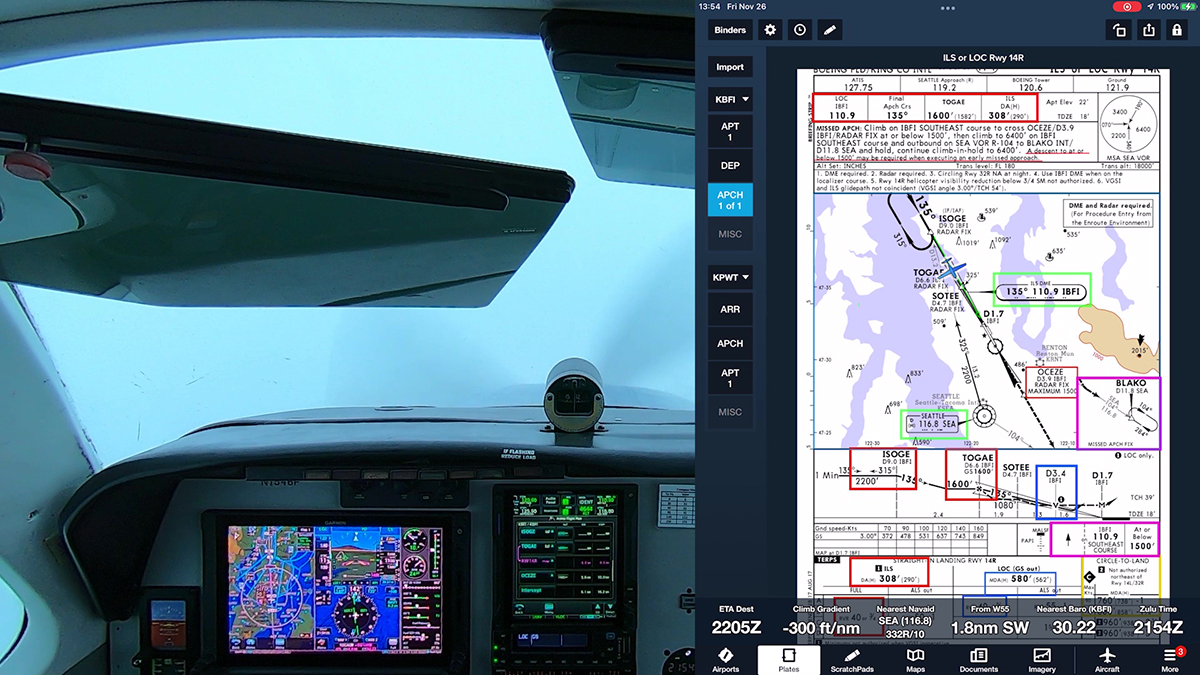FAA has released updates to the AIM, effective October 24, 2013, that may be of interest to IFR pilots who fly with an IFR-approved GPS. The key changes involve:
- Equipment codes used on domestic flight plans
- Requirements for radar monitoring on direct routes, especially for aircraft equipped with an IFR-approved GPS.
The changes include new terms—or clarifications of existing terms: impromptu RNAV routes and point-to-point routes.
You can read the revised AIM pages 5-1-13, 5-1-15, and 5-3-6 here (PDF). They will be included in the next scheduled update to the AIM.
Guidance concerning these changes for air traffic controllers is published in an update, “Global Navigation Satellite System (GNSS) Equipped Aircraft Operating on Random Routes,” to the ATC handbook, JO 7110.639. It’s available here (PDF).
Domestic Flight Plan Equipment Codes
The first change concerns equipment codes for domestic flight plans. Fortunately, for typical GA pilots flying with an IFR-approved GPS, the familiar /G suffix remains in effect. You should use the new /V or /S codes only if you have no transponder or a transponder without Mode C.
If you operate in the RVSM airspace and/or use other equipment (such as an INS or a DME/DME FMS) to meet RNAV requirements, FAA has published new equipment suffixes, which are described in the revised pages.
Note that these new equipment codes apply only when using the domestic FAA flight plan format. If you use the ICAO flight plan form, use the equipment codes designated for that format.
Off-Airway Routes with IFR-Approved GPS
The AIM update changes some considerations for filing and flying off-airway and direct routes if your aircraft is equipped with an IFR-approved GPS.
First, the new AIM 5-1-15 (d) Area Navigation (RNAV) formally introduces the term impromptu RNAV routes. In the update for air traffic controllers, a random impromptu route is defined as:
…[A] direct course initiated by ATC or requested by the pilot during flight. Aircraft are cleared from their present position to a NAVAID, waypoint, fix, or airport.
An impromptu RNAV route can be approved only in a radar environment, and ATC will monitor the flights on such routes, but navigation remains the responsibility of the pilot.
The updated AIM 5-3-4 (3) Area Navigation (RNAV) Routes describes unpublished RNAV routes (that is, routes other than T-routes and Q-routes):
Unpublished RNAV routes are direct routes, based on area navigation capability, between waypoints defined in terms of latitude/longitude coordinates, degree−distance fixes, or offsets from established routes/airways at a specified distance and direction.
Radar monitoring is still generally required for such unpublished RNAV routes.
But if you have an IFR-approved GPS, and you are cleared to fly a direct route based on published waypoints recalled from the GPS database, radar monitoring is no longer required. Such routes are also called point-to-point routes.
The maximum distance between the published waypoints is 500 nm, and the assigned altitude must be at or above the highest minimum instrument altitude (MIA) along the route, which provides obstacle clearance 4 miles either side of the route centerline.
For example, a point-to-point route from an airport in the Seattle area to Newport, OR (KONP) might use named RNAV fixes en route and end at a VOR: HAROB FEBOT ERAVE REDHK ONP. If you’re flying a GPS-equipped aircraft, radar monitoring wouldn’t be required along that route.


